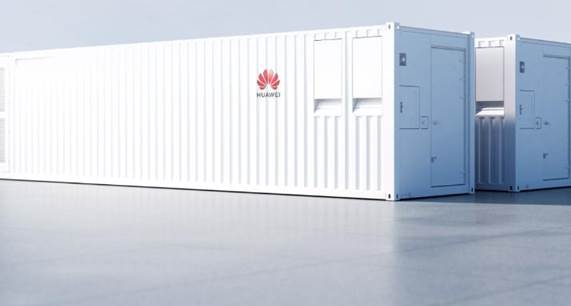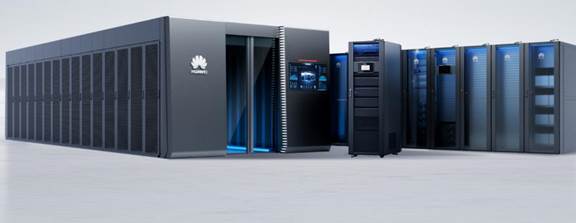Selecting the right data center location
is crucial for ensuring optimal performance and efficiency. Various factors
come into play, from power availability and cost to connectivity and
environmental risks. By integrating digital and power electronics technologies,
companies like Huawei Digital Power offer solutions that harness each watt more
efficiently. In this blog, we’ll explore the key considerations, including
energy efficiency, security, scalability, and compliance, to help you make an
informed decision for your organization’s data center needs.

Power
Availability and Cost
Power availability and cost are crucial
when selecting a data center location. Consistent and reliable power ensures
that data centers operate without interruption, a cornerstone for high
availability and performance. Companies like Huawei Digital Power provide
optimized solutions to utilize power in a more efficient, low-carbon manner,
significantly reducing energy consumption without sacrificing reliability.
Electricity costs can vary widely
depending on the location. Therefore, evaluating the cost of power in different
regions can yield significant long-term savings. Advances in smart power supply
and distribution systems have made it possible to enhance power efficiency
while cutting costs, making certain locations more attractive. Moreover,
consider regions offering renewable energy sources for a sustainable,
future-proof data center operation.
Connectivity
and Network Proximity
Connectivity stands as a pillar for any
data center framework. Proximity to major network hubs minimizes latency and
enhances data transfer speed, which is critical for smooth operations. Huawei’s
integration of AI solutions contributes to building simplified, smart
distribution systems that ensure reliable connections.
Evaluate the availability of multiple
high-speed internet service providers (ISPs) in the potential locations.
Diverse connectivity options afford redundancy and diminish the risk of service
outages. Moreover, it’s important to consider regions with robust network
infrastructure, especially those that facilitate low-latency connections to key
markets and end-users.
Climate and
Environmental Risks
Climate and environmental risks must be
carefully assessed when choosing a data center location. Natural disasters such
as earthquakes, floods, and hurricanes can disrupt operations and cause
significant damage to infrastructure. Locations that are prone to extreme
weather conditions require additional precautions and investment in disaster
recovery solutions.
Environmental control is another crucial
aspect. Data centers generate considerable heat, necessitating efficient
cooling solutions to maintain optimal operating temperatures. Huawei’s smart
cooling solutions provide energy-saving and rapid delivery systems that are
beneficial in regions with warmer climates. Thus, selecting regions with
moderate climates can help in reducing cooling costs and improving energy
efficiency.
Energy
Efficiency and Sustainability
Energy efficiency and sustainability are
no longer optional; they are critical. An energy-efficient data center
minimizes operational costs and reduces environmental impact, aligning with
global sustainability goals. Huawei Digital Power promotes energy efficiency
through advanced AI integration and modular systems that optimize power usage.
Look for locations where renewable
energies are accessible and economical. Data centers powered by solar, wind, or
hydroelectric power can achieve significant cost savings and contribute to
sustainability. Furthermore, energy-efficient designs and smart management
systems can lower the carbon footprint, reinforcing the commitment to green
technology.
Security and
Compliance
Security and compliance are paramount for
safeguarding sensitive information and ensuring legal adherence. Data centers
should be located in regions with robust legal frameworks that protect privacy
and offer operational security. Assessing local regulations on data protection
is vital to comply with international standards.
Physical security measures are equally
necessary. Institutions like Huawei employ intelligent O&M powered by
digital intelligence to ensure that security protocols are efficiently managed.
Moreover, invest in data centers that offer advanced security features like
biometrics and stringent access controls to mitigate risks and safeguard data
integrity.

Scalability
and Future Growth
Scalability ensures that data centers can
meet future demands without significant overhauls. A modular design approach,
like Huawei’s smart modular DC, allows seamless expansion as your business
grows. Assess the potential for physical expansion within the location and
ensure that the site’s infrastructure can handle additional capacity.
Future growth considerations should
include emerging technologies and increasing data demands. Opt for regions that
are tech-friendly and have supportive government policies. The integration of
sustainable and modular solutions will provide more flexibility as
technological requirements evolve, ensuring the data center remains a viable
asset in the long term.
Conclusion
Selecting the ideal data center location involves
meticulous consideration of multiple factors to ensure efficiency, reliability,
and sustainability. Evaluate power availability, connectivity, climate, and
scalability to make an informed decision. Companies like Huawei Digital Power
are pioneering solutions to enhance energy efficiency and operational
performance in data center facilities. By considering all essential factors, businesses can choose a
data center location that aligns with their operational needs and long-term
goals.
